#century:
Explore tagged Tumblr posts
Photo
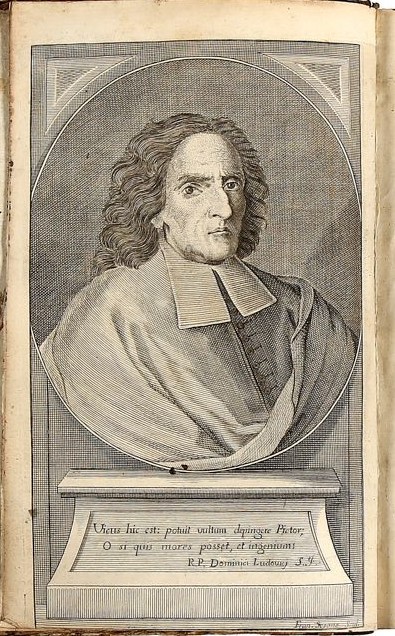

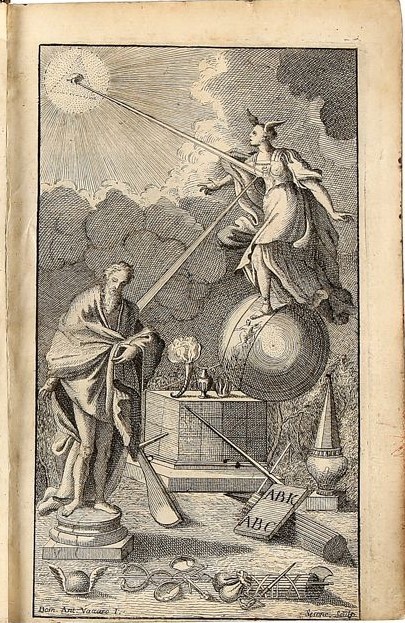

Giambattista Vico – Scientist of the Day
Giambattista Vico, an Italian philosopher, was born June 23, 1668, in Naples.
Learn more
#Giambattista Vico#historical thought#historicism#histsci#histSTM#18th century#history of science#Ashworth#Scientist of the Day
23 notes
·
View notes
Text
Reblogging this even though it’s an old post it is quite informative and interesting.
The French Police Hierarchy and Javert’s Patron
After extensive Google-fu, I’ve compiled as much information as I can find on the French police prefecture during Les Miserablès and specifically, Javert’s mysterious patron, M. Chabouillet. If anyone cares to add to this post, please do; I can’t read a word of French, and aside from the almanacs, I haven’t dug into any original documents from that time period. Most of my conclusions regarding the police hierarchy are from papers written in the mid-to-late 1800s, which saw great changes in the Paris bureaucracy.
Tracking down Javert’s Patron In the brick, Victor Hugo introduces a M. Chabouillet, Javert’s patron, who facilitates his career within the police force. When we first meet Javert in Montreuil-sur-mer, he writes (Vol. 1, Book 5, Ch. 5):
Javert owed the post which he occupied to the protection of M. Chabouillet, the secretary of the Minister of State, Comte Anglès, then prefect of police at Paris.
Later, after Valjean escapes to Paris, M. Chabouillet arranges for Javert to move to the capitol as well (Vol. 2, Book 5, Ch. 10):
Javert’s zeal and intelligence on that occasion had been remarked by M. Chabouillet, secretary of the Prefecture under Comte Anglès. M. Chabouillet, who had, moreover, already been Javert’s patron, had the inspector of M. sur M. attached to the police force of Paris.
With these two pieces of information, I started digging in the Paris almanac archives for any references to a Chabouillet [1]. As it turns out, there exist two men with the surname of Chabouillè, who served within the Prefecture of Police during this time.
The first is an Architectes inspecteurs divisionnaires in 1820 [1], which roughly translates to divisional inspector architect. I couldn’t find a description of this position around that decade, or any other position for that matter. The best document on the Prefecture’s administration is a letter from H.S. Sanford in 1854 [5], so I’ll refer to it for the rest of this post even though the bureaus and their responsibilities got shuffled around like musical chairs. On pg. 344, Sanford speaks of a “…commissary of the petite voirie, who has under him four architects of the first class, and six architects of the second class.” They are part of the active service in the 2nd bureau, 2nd division, with duties involving the inspection of buildings, quarries, and mines. I don’t see this man’s jurisdiction overlapping with Javert’s position handling criminal cases. Javert would not have written him regarding M. Madeleine, and I doubt he would have the power to send Javert to Montreuil-sur-mer or Paris.
However, the second Chabouillè is the head of the 1st bureau, 1st division in the Prefecture of Police. He holds this post over the years 1810 to 1831, which overlap with Comte Anglès’s term as well as Javert’s career as a policeman. (Some almanacs are missing, so he might have been there longer. He’s not listed in the position in 1808 or 1833). This bureau’s responsibilities also cover public order and security matters directly related to Javert’s investigations: “Pursuit of criminals and delinquents signalized or unknown, and against whom no writs have yet been issued… suicides and accidental deaths… carrying of forbidden arms… supervision of liberated prisoners, convicts, rèclusionnaires, and others…” [6, pg. 338]. As head of this bureau, Chabouillè ranks high up there in terms of power (see the section How Powerful was Chabouillè?), so it makes sense he would be Javert’s patron and have the authority to summon Javert to Paris.
Why then does Hugo call Chabouillet the secretary to Anglès? I believe he actually means that Chabouillet performed secretarial duties, not that his position was literally that of a secretary. There is no Chabouillè listed as secretary general or any form of secretary during Anglès’s term in the almanacs. However, Napoleon organized the bureaus as an administrative structure to aid the Prefect in carrying out his immense duties [2]. In 1809, when Vidocq entered the government, the 1st division was considered the Administrative Branch [12] since it had no active service component, and Chabouillè would have been tasked with much of the paperwork involved in policing Paris. (Later on, I think the 1st bureau, 1st division had a more direct hand in investigations). So it makes sense for Hugo to refer to him as secretary to the Prefect if we consider all bureau chiefs performed such duties.
Where did Chabouillè Live? As a nice bonus, I discovered that the almanacs contain the residential addresses of many important people! For example, M. Gisquet, the Prefect in 1831, is listed as residing on Rue de Jerusalem, which is where all prefects lived during their term. I looked up Chabouillè, and his address in 1825 is the cul-de-sac S.-Claude-Montmartre, 2. In 1827, this changes to S.-Martin, 226, which lies in the aristocratic Marais district, where he remains through his departure as bureau chief in 1833. Interestingly, he is joined at this address by two Madame Chabouillè’s: one a libraire and one a papetier with a F. Guyot. Family members, perhaps?
You can search these addresses on the Les Miserables map to get a sense of where he lived relative to other characters in the brick.
How Powerful was Chabouillè? The Police in Montreuil-sur-mer To understand how much power Chabouillè wielded, we must first take a detour into the labyrinthine structure of the Prefecture of Police. France is divided into administrative regions called departments, which are sub-divided into arrondissements, cantons, and finally, communes. Each department has its own prefecture (except Paris, see below) governed by a prefect, who is a representative of the national government, and for those arrondissements that don’t contain the prefecture, a sub-prefect carries out the same administrative duties, reporting directly to the prefect. Police responsibilities are divided between the mayor and the prefect. The prefect is responsible for the general safety of the State and his department (police generale), while the mayor is in charge of public safety in his commune (police municipale) and the countryside (police rurale).
Montreuil-sur-mer is a single commune falling inside the jurisdiction of a sub-prefecture. As mayor, Valjean is the authority on municipal police matters, which is why he can overrule Javert in the Fantine case. However, once Javert suspects M. Madeleine is actually Valjean, he can elevate his concerns to the police generale level, since an ex-convict posing as a magistrate threatens the safety of the State! What I find interesting is that Javert sidesteps the proper route, which would be to go to the sub-prefect or even to the prefect of his arrondissement, and instead writes directly to Chabouillet. As head of the 1st bureau, 1st division in the Paris Police Prefecture, Chabouillet would hardly be involved in police matters of a small commune like Montreuil-sur-mer, which doesn’t even lie within his department.
Perhaps Javert was afraid that Valjean had already ingratiated himself with the prefect of the arrondissement? Working in the capitol, Chabouillet would be in a better position to maneuver politically if he wished to contest decisions of the local administrators and mayor. All prefects were ultimately responsible to the Minister of the Interior, who resided in Paris.
The Police in Paris Paris is unusual in that it has no elected mayor: it is “…a single commune, divided into twelve arrondissements, each with its own mayor… The real rulers of the city were the Prefect of the Seine, who had his office at the Hôtel de Ville, and the Prefect of Police, whose headquarters was on rue Jerusalem and the quai des Orfèvres on the Île de la Cité.” [10]. The Prefect of Police not only held municipal police powers, but was also charged with maintaining the security of the State (preventing plots, espionage, etc) and the safety of the Department (public health, morality, etc) [9]. His reach extends across Paris and its three surrounding departments, the Petite Couronne. With so many duties, it is natural for the Prefect to delegate.
He has a second in command, the Secretary General, and two councils: the Council of the Prefecture dealt with litigation, while the General Council for the Department handled financial problems (and only convened once a year). However, the true day-to-day management happens in the bureaus, where we find Chabouillè. He is the head of the 1st bureau, one of three under the 1st division, which is governed by a superintendent. The superintendent would likely report to either the Secretary General or the Prefect of Police himself; I am uncertain what the hierarchy looked like in Hugo’s time, as my closest reference is a paper from 1954 [9]. Nevertheless, given how compartmentalized the Prefecture was, Chabouillè would be the expert on his segment of police work.
Where did Javert figure in the ranks compared to his patron? Well, some bureaus had sub-sections, each governed by an inspector general, but I don’t think this was the case for the 1st bureau, 1st division (at least it isn’t mentioned in Sanford’s letter). Beneath the inspector generals were the commissioners. Paris at the time was divided into 12 arrondissements, each further sub-divided into quartiers for a total of 48. A quartier was overseen by a commissaire de police, who “…superintends its cleanliness and lighting; takes cognizance of misdemeanors; makes the first examination of crimes and offenses… The commissaries are in constant communication with the people, and attend to the complaints they may have to make. Their residence is known at night by a square lantern of coloured glass hung at the door.” [6] In the mid-18th century, commissioners were generally well-educated men with legal training, who joined as a secretary/assistant and worked their way up. It was virtually impossible for a junior officer to be promoted to the position [11]. Thus, at best, Javert was one rank below the commissioner, serving as a chief inspector in a quartier. This is probably as high as someone of his background could climb in the career ladder… which makes it all the more interesting that he enjoys the patronage of a man like Chabouillet.
Miscellaneous Prefect’s Uniform: “…this took the form of a blue coat embroidered with silver at the collar, at the cuffs and at the pockets, under which there was a white vest. The trousers were also white. A red scarf with silver fringes and a hat also embroidered in silver completed the outfit.” [2]
Prefect’s Salary: The salary of the Prefect of Police in Paris was 50,000 francs. For comparison, a principal inspector was paid 7,166 francs, and a rank-and-file inspector earned 1,500 francs [6, pgs. 154-155] [7].
Prefect’s Secretary: In addition to the Secretary General, which was a powerful political position in its own right, the Prefect of Police often employed a secretaire intime du Préfet, which literally translates to “intimate secretary of the Prefect.” Of all the almanacs I studied from 1807 to 1833, the only Prefect who had multiple individuals in this capacity was M. Gisquet: M. Nay was the secretaire intime, chef, and M. Nabon de Veaux was the sous-chef [1]. Take that as you will in your head-canons.
Office of the Sûreté: “At the time of Vidocq’s ingress to government service, 1809, the police force, or Prefecture, in Paris was comprised of two divisions: the First Division, or the Administrative Branch, and the Second Division, or Special Investigative Branch. The latter, managed by Monsieur Henry, was the unit to which Vidocq belonged; it concerned itself with the overall battling of crime.” [9]
Drownings and Accidental Deaths: “La Morgue, Marche Neuf - This is a place in which are deposited for three days the bodies of unknown persons who are drowned, or meet with accidental death. They are laid upon inclined slabs, open to the inspection of the public, in order that they may be recognized by those interested in their fate. Their clothes are hung up near them, as an additional means of recognition. If not claimed, they are buried at the public expense.” [6] This is where Javert’s body would have been taken. Since the 1st bureau, 1st division handles suicides and accidental deaths, it is likely Chabouillet learned of his protegé from a report on his desk…
References [1] Almanach du commerce de Paris, archives (You can search some of the almanacs, but the function is quite poor and misses many matches. Your best bet is to download the pdf, check the index, and manually comb the relevant pages. For some reason, the Prefecture de Police pages are missing from the 1820 pdf in the archives, but you can find them on Google Books). [2] Williams, Robert D. Napoleon’s Administrative Army - His Prefects. Member’s Bulletin: Napoleonic Society of America. Issue 72. (Summer/Fall 2002): pp. 15-20. [3] Napoleon’s Law for Reorganizing the Administrative System (Febuary 17, 1800) [4] Letters on France and England. The American Review of History and Politics, Vol. 3. (1812). [5] H.S. Sanford’s Report on Administrative Changes in France since 1848 [6] Galignani’s New Paris Guide for 1859 [7] The Cabinet of the Prefect (September 1, 1862) [8] Payne, Howard C. An Early Concept of the Modern Police State in 19th Century France. 43 J. Crim. L. Criminology & Police Sci. 377. (1952-1953) [9] Chapman, Brian. The Prefecture of Police. 44 J. Crim. L. Criminology & Police Sci. 505. (1953-1954) [10] Paris under Napoleon: The Administration of the City (Wiki) [11] Commissaire de police in France (Wiki) [12] Vidocq and the Office of the Surete
#les misereference#les mis discussion#les mis#les miserables#police prefecture#police inspector#Javert#inspector javert#chabouillet#Javert and his police patron#police#19th century french police
262 notes
·
View notes
Text
Happy Holi 2024: celebrate festival of colours

Holi, the vibrant festival of colors, is a much-anticipated event in India, steeped in both cultural and religious significance. Here's a dive into its rich tapestry: Preparations and Festive Atmosphere: How Indians Gear Up for Holi Colors Galore: A Deep Dive into the Symbolism and Tradition of Gulal Traditional Treats and Delicacies: Indulging in Holi Specialties Community Gatherings and Festive Rituals: Understanding Holi Traditions Across India Music, Dance, and Merrymaking: The Joyful Spirit of Holi Celebrations Holi Around the Nation: Regional Variations and Unique Customs Eco-Friendly Holi: Promoting Sustainable Practices and Safe Celebrations Capturing the Magic: Holi Photography Tips and 2024 Highlights Happy Holi! Reflections on Unity and Togetherness: Holi's Message of Love and Harmony in Modern India Religious Roots: - Victory of Good over Evil: Holi celebrates the triumph of good over evil, as exemplified by the legend of Prahlad and his demoniac aunt Holika. Holika, tricked by Prahlad's devotion to Lord Vishnu, perished in the flames meant for him. The burning of Holika, symbolically recreated during Holi, marks this victory. - Myth of Kamadeva: Another legend associates Holi with Kamadeva, the god of love. After being reduced to ashes by Lord Shiva's anger, Kamadeva was later revived. Holi signifies the return of spring and the blossoming of love. Cultural Significance: - Welcome Spring: Holi coincides with the arrival of spring, marking the end of winter and the beginning of a bountiful harvest season. The vibrant colors symbolize the blossoming of flowers and the renewal of life. - Social Harmony and Forgiveness: Holi transcends religious boundaries and brings people together. The playful throwing of colors breaks down social barriers and fosters a spirit of forgiveness and reconciliation. - Celebration of Life: Holi is a time for joy, revelry, and community. People of all ages and backgrounds come together to sing, dance, and feast, celebrating life and its beauty. Holi in Jaipur: Being in Jaipur, you're in for a treat! Holi in the Pink City is a sight to behold. Here are some special local traditions: - Elephant processions with vibrant colors. - Holi bonfires (Holika Dahan) the night before. - Unique local colors like Lathmar Holi, where women playfully chase men with sticks. Holi is a multifaceted festival that transcends religion and unites communities. It's a celebration of life, spring, and the triumph of good over evil. So, when Holi arrives, get ready to be doused in colors and experience the infectious joy of this incredible festival!
Preparations and Festive Atmosphere: How Indians Gear Up for Holi

Preparations and Festive Atmosphere: How Indians Gear Up for Holi As Holi approaches, a wave of excitement washes over India. Here's a glimpse into how Indians gear up for this vibrant celebration: Before the Festivities: - Stocking Up on Colors: Vibrant dry powders (gulal) and water guns (pichkaris) become common sights in markets. People choose natural, eco-friendly colors made from herbs and flowers whenever possible. - Sweet Treats and Savories: Homes transform into bustling kitchens as families prepare traditional delicacies like Gujiyas (sweet dumplings), Thandai (a chilled beverage), Dahi Vada (savory lentil fritters dipped in yogurt), and Mathri (fried flaky flatbreads). - Preparing for the Play: Old clothes, preferably white, are dug out of closets. Applying oil on exposed skin and hair helps protect them from the colorful onslaught and makes cleanup easier. Building the Atmosphere: - Cleaning and Decorating Homes: Houses are given a thorough cleaning, and rangolis (decorative patterns) made from colored powders or flowers adorn entrances. This welcomes good luck and festivity. - Community Preparations: In some regions, bonfires (Holika Dahan) are lit the night before Holi, symbolizing the burning of evil. Community gatherings and prayer ceremonies might also be held. - Music and Dance: The festive spirit fills the air with vibrant music and dance. Bollywood Holi songs become anthems, and impromptu dance parties erupt on streets and houses. The Day of Holi: - Exchanging Greetings and Colors: As Holi arrives, greetings of "Happy Holi!" fill the air. People step out, ready to be doused in vibrant colors. Laughter, playful chases, and the joy of community paint the town in a kaleidoscope of hues. - Sharing Delicacies: After the color fight, it's time to indulge in the delicious spread of holi delicacies, fostering togetherness and strengthening bonds. Holi preparations are a vibrant part of the festival itself. It's a time for families and communities to come together, share traditions, and create lasting memories. So, if you're lucky enough to experience Holi in India, be prepared to be swept away by the infectious energy and the spirit of this incredible celebration!
Colors Galore: A Deep Dive into the Symbolism and Tradition of Gulal

Preparations and Festive Atmosphere: How Indians Gear Up for Holi Gulal, the vibrant colored powder that defines Holi, is more than just a plaything. It's a symbolic element steeped in tradition and cultural significance. Let's delve into the world of gulal: Symbolism of Colors: Each vibrant hue of gulal carries a special meaning: - Red: Often associated with love and passion, red gulal reflects the legend of Radha and Krishna's playful love. It can also symbolize good luck and prosperity. - Green: Representing new beginnings and nature's bounty, green gulal reflects the arrival of spring celebrated during Holi. - Blue: Often linked to Lord Krishna, the blue colored gulal signifies calmness, peace, and eternity. - Yellow: This bright hue is associated with knowledge, optimism, and happiness. It reflects the vibrancy of the festival season. - Pink: A softer shade of red, pink gulal embodies feelings of love, affection, and tenderness. Beyond the Colors: - Natural Ingredients: Traditionally, gulal is made from finely-ground leaves, flowers, and herbs. This not only makes it eco-friendly but can also have subtle medicinal properties depending on the ingredients used. - Blessing and Playfulness: The act of smearing gulal is seen as a way of exchanging blessings and good wishes. It breaks down social barriers and creates a playful atmosphere where everyone is equal. - Auspicious Offering: In some regions, gulal is offered at the feet of deities or sprinkled around homes to usher in good fortune and ward off evil. Modern-Day Concerns: - Chemical-laden Gulal: Unfortunately, commercially produced gulal often contains harsh chemicals that can irritate the skin and eyes. Opting for natural and herbal alternatives is a safer and more eco-friendly choice. The Spirit of Holi: Gulal embodies the essence of Holi – a celebration of life, joy, and togetherness. It transcends social hierarchies and unites people in a vibrant explosion of color. So, the next time you're showered with gulal during Holi, remember the rich symbolism and traditions it carries!
Traditional Treats and Delicacies: Indulging in Holi Specialties
Holi is a riot of colors, but it's also a feast for the senses with a wide array of traditional treats and delicacies. Let's explore some of the culinary delights that make Holi extra special: Sweet Indulgences: - Gujiya: These deep-fried crescent-shaped pastries are a star attraction. Filled with a sweet mixture of khoya (dried milk solids), nuts, and raisins, they are often soaked in sugar syrup for an extra layer of sweetness. - Malpua: These fluffy pancakes, dipped in fragrant sugar syrup and garnished with chopped nuts, are a popular dessert choice. Their crispy exterior and soft, syrupy interior create a delightful textural contrast. - Thandai: This chilled beverage is a refreshing Holi staple. Made with milk, almonds, cashews, fennel seeds, watermelon seeds, and a touch of rosewater, it's a delicious and cooling drink perfect for the warm weather. - Phirni: This creamy rice pudding, flavored with cardamom and saffron, is a simple yet satisfying sweet dish. Some variations might include nuts or chopped fruits for added texture. - Jalebi: These bright orange colored pretzel-shaped sweets, deep-fried and soaked in sugar syrup, are a popular choice across India. Their crispy exterior and sugary glaze make them a melt-in-your-mouth treat. Savory Delights: - Dahi Bhalla: These crispy lentil fritters, soaked in creamy yogurt and topped with chutneys and spices, offer a delightful combination of textures and flavors. - Mathri: These crunchy, flaky flatbreads are often enjoyed on their own or crumbled over curries for added texture. They can be plain or flavored with carom seeds or ajwain. - Samosas: These savory fried or baked pastries with spiced fillings like potatoes and peas are a popular snack enjoyed throughout India, and a perfect addition to a Holi feast. - Pakoras: These delectable fritters, made with vegetables dipped in a chickpea batter and deep-fried, come in a variety of options. They are a crowd-pleasing snack that can be enjoyed with chutneys or yogurt. - Kanji Vada: This tangy and spicy side dish features lentil dumplings soaked in a fermented mustard seed brine. It's a unique and flavorful accompaniment to other Holi treats. These are just a few examples of the many delicious dishes associated with Holi. As you travel across India, you'll discover regional specialties and variations on these classics, making the culinary adventure even more exciting! So, come hungry and ready to indulge in the delightful flavors of Holi!
Community Gatherings and Festive Rituals: Understanding Holi Traditions Across India
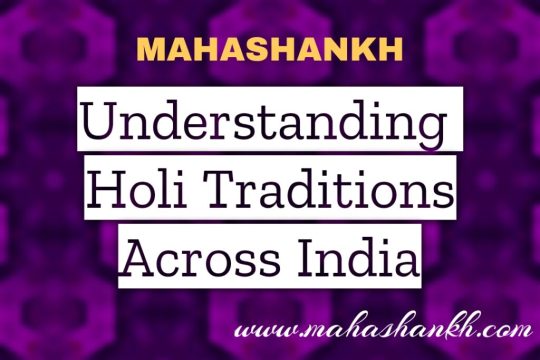
Traditional Treats and Delicacies: Indulging in Holi Specialties Holi, the festival of colors, is a vibrant tapestry woven from regional traditions and customs. While the spirit of joy and throwing colors remains constant, the way different communities celebrate Holi showcases India's rich cultural diversity. Let's explore some fascinating variations: North India: - Uttar Pradesh: Mathura and Vrindavan come alive with Lathmar Holi, a playful twist where women playfully chase men with sticks, reenacting the legend of Radha and Krishna. - Punjab: Hola Mohalla, a three-day celebration following Holi, features vibrant processions, martial arts displays, and spirited folk dances, showcasing the warrior spirit of the region. East India: - West Bengal: Dol Jatra or Dola Purnima is observed with colorful processions and rituals dedicated to Lord Krishna. People carry idols of Krishna and Radha amidst music and dance. - Odisha: Dola Jatra or Doul Yatra involves elaborate chariot processions carrying the idol of Lord Jagannath. People shower each other with colored powder and dance to the beats of traditional drums. West India: - Maharashtra: Rang Panchami, celebrated five days after Holi, is a vibrant affair with colors, water guns, and delicious treats. People visit each other's homes and exchange blessings. - Gujarat: Dhuleti, another name for Holi in Gujarat, involves throwing colored powder and water balloons. People also sing traditional folk songs like "Fagua" to mark the occasion. South India: - Tamil Nadu: Here, Holi is a more subdued affair called Ugadi, marking the Tamil New Year. People wear new clothes, decorate their homes with colorful kolams (floor art), and exchange gifts and greetings. - Kerala: Ukuli or Manjurulli is observed with the burning of a symbolic pyre, signifying the end of winter. People light bonfires and apply a paste made of charcoal and neem leaves for supposed medicinal benefits. Beyond Regional Variations: - Holika Dahan: The night before Holi, bonfires (Holika Dahan) are lit in many parts of India, symbolizing the burning of evil as depicted in the legend of Prahlad. - Community Feasts: After the color play, communities often come together for elaborate feasts featuring traditional delicacies specific to each region. - Prayers and Offerings: In some regions, special prayers and offerings are made to deities associated with Holi, seeking blessings for good harvest and prosperity. These are just a glimpse into the diverse ways communities celebrate Holi across India. Each region adds its unique flavor, making Holi a true celebration of India's cultural and traditional richness. So, if you have the opportunity to experience Holi in different parts of India, prepare to be amazed by the kaleidoscope of colors, customs, and traditions that come alive during this joyous festival!
Music, Dance, and Merrymaking: The Joyful Spirit of Holi Celebrations
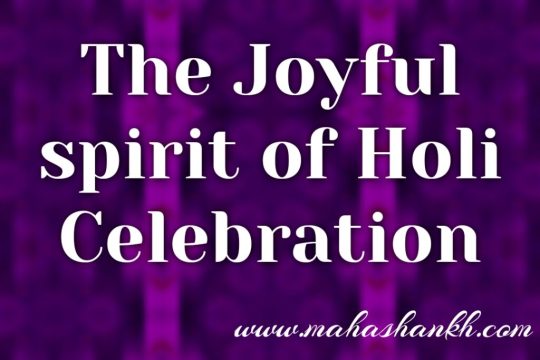
Music, Dance, and Merrymaking: The Joyful Spirit of Holi Celebrations Holi is an explosion of joy, music, and dance that transcends religious and social barriers. It's a time to let loose, celebrate life, and revel in the vibrant spirit of the festival. Here's a glimpse into the heart of Holi's jubilant atmosphere: Music that Moves You: - Energetic Beats: Holi is synonymous with upbeat Bollywood Holi anthems. Songs like "Balam Pichkari" and "Rang Barse" blare from speakers, turning streets and homes into open-air dance floors. - Traditional Rhythms: Folk music specific to each region adds a unique flavor to the celebrations. From the melodious Dhols of North India to the pulsating beats of Dhol in Gujarat, traditional instruments set the rhythm for vibrant folk dances. - Singing Along: Singing along to traditional Holi songs and bhajans (devotional hymns) is a big part of the festivities. It creates a sense of community and togetherness, as everyone joins in the joyful spirit. Dance Like Nobody's Watching: - Impromptu Dance Parties: Holi celebrations are not about formal steps or choreography. It's about letting loose, expressing joy through movement, and creating a sense of playful abandon. - Traditional Folk Dances: Each region boasts its own traditional folk dances performed during Holi. Bhangra and Gidda from Punjab, the Dandiya Raas of Gujarat, and the energetic Holi dance of Mathura are just a few examples. - Generational Celebration: Holi transcends age barriers. From young children to grandparents, everyone joins in the dance, creating a heartwarming spectacle of uninhibited joy. Beyond the Music and Dance: - Bhang Lassi: A special drink made with cannabis leaves and milk or yogurt, Bhang Lassi is traditionally consumed during Holi in some regions. It's believed to induce a sense of euphoria and contribute to the festive spirit (Note: Consumption of Bhang Lassi can be illegal in some regions, so it's important to be aware of local laws and customs). - Water Games: While throwing colors is central to Holi, playful water fights with pichkaris (water guns) add another layer of fun and frivolity to the celebrations. The Essence of Joy: Holi's music, dance, and merrymaking are more than just entertainment; they are the very essence of the festival. They embody the spirit of letting go of inhibitions, celebrating life's simple pleasures, and fostering a sense of community and togetherness. So, if you ever find yourself amidst a Holi celebration, don't hesitate to join the dance, embrace the vibrant colors, and let the joyous spirit of Holi sweep you away!
Holi Around the Nation: Regional Variations and Unique Customs

Holi, the festival of colors, is a kaleidoscope of vibrant traditions and customs that vary across India. Here's a journey through some of the fascinating regional variations that showcase the rich cultural tapestry of Holi: North India: - Mathura and Vrindavan (Uttar Pradesh): Come alive with Lathmar Holi, a playful twist where women playfully chase men with sticks, reenacting the legend of Radha and Krishna. - Punjab: Holi culminates in Hola Mohalla, a three-day extravaganza featuring vibrant processions, martial arts displays, and energetic folk dances, reflecting the region's warrior spirit. East India: - West Bengal: Celebrates Dol Jatra or Dola Purnima with colorful processions and rituals dedicated to Lord Krishna. Idols of Krishna and Radha are carried amidst music, dance, and joyous revelry. - Odisha: Dola Jatra or Doul Yatra involves spectacular chariot processions carrying the idol of Lord Jagannath. People shower each other with colored powder and dance to the beats of traditional drums. West India: - Maharashtra: Celebrates Rang Panchami five days after Holi. This vibrant affair features colors, water guns, delicious treats, and visits to exchange blessings, strengthening social bonds. - Gujarat: Embraces Dhuleti, another name for Holi, with throwing colored powder and water balloons. Read the full article
#AbundanceofBlessings#AncestralCustoms#AncientCustoms#AncientRituals#AncientWisdom#AppreciativeJoy#AuspiciousBeginnings#BlessingsGalore#BlissfulFestivities#BlissfulHarmony#BlissfulMoments#BloomingJoy#BollywoodHoliSongs#BondingMoments#BonfireNight#BonfireRitual#BrighteningLives#BurningEvilSpirits#CalmFestivities#CelebratingAncestry#CelebratingHappiness#CelebratingTogether#CelebratoryBliss#Centuries-oldCelebrations#CheerfulCelebrations#CherishedMemories#ColorSplash#ColorfulBlessings#ColorfulDecorations#ColorfulDiversity
0 notes
Photo
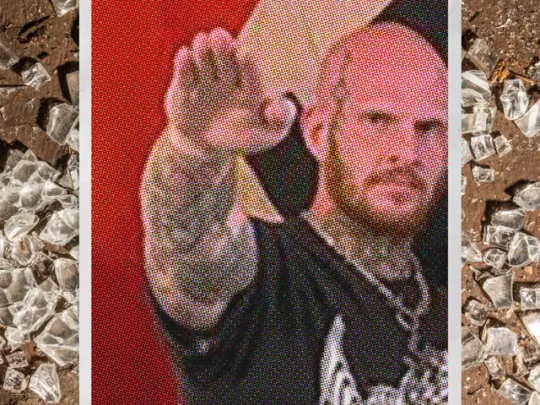
How Concerned Citizens Drove a Neo-Nazi Out of Rural Maine
Christopher Pohlhaus planned to build a fascist training compound in the woods of rural Maine. The local journalists, veterans, lumberjacks, and policymakers weren't having it.
Pohlhaus, 37, is a former U.S. marine, an itinerant tattoo artist, and a hardcore white-supremacist influencer. He is loud and hostile, and proud to be both. His voice is pitched surprisingly high, and he has a slight Southern drawl. He has a large body and small bald head; a blue-black tattoo crawls up the right side of his face, from his chin to his forehead. Over the years, Pohlhaus has collected thousands of social media followers, who know him by his nickname: Hammer.
Hammer had been living in Texas for a few years when, in March 2022, he bought the land in Maine. He told his followers that he was going to use it to build a haven, operational center, and training ground for white supremacists.
Check out our excerpt of The Atavist’s latest blockbuster story.
1K notes
·
View notes
Photo

PORTO ROCHA
847 notes
·
View notes
Photo
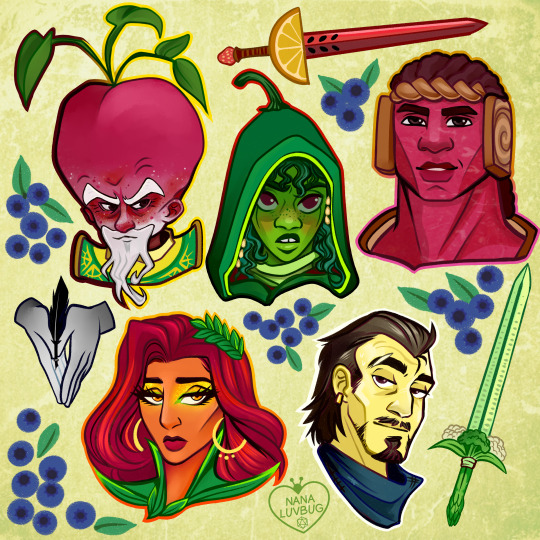
🧀🥪🌶️🥭 The Ravening War portraits 🧀🥪🌶️🥭
patreon * twitch * shop
[ID: a series of digitally illustrated portraits showing - top left to bottom right - Bishop Raphaniel Charlock (an old radish man with a big red head and large white eyebrows & a scraggly beard. he wears green and gold robes with symbols of the bulb and he smirks at the viewer) Karna Solara (a skinny young chili pepper woman with wavy green hair, freckled light green skin with red blooms on her cheeks. she wears a chili pepper hood lined with small pepper seeds and stares cagily ahead) Thane Delissandro Katzon (a muscular young beef man with bright pinkish skin with small skin variations to resemble pastrami and dark burgundy hair. he wears a bread headress with a swirl of rye covering his ears and he looks ahead, optimistic and determined) Queen Amangeaux Epicée du Peche (a bright mango woman with orange skin, big red hair adorned with a green laurel, and sparkling green/gold makeup. she wears large gold hoop earrings and a high leafy collar) and Colin Provolone (a scraggly cheese man with waxy yellow skin and dark slicked back hair and patchy dark facial hair. he wears a muted, ratty blue bandana around his neck and raises a scarred brow at the viewer with a smirk) End ID.)
#trw#the ravening war#dimension 20#acoc#trw fanart#ttrpg#dnd#bishop raphaniel charlock#karna solara#thane delissandro katzon#queen amangeaux epicee du peche#colin provolone
2K notes
·
View notes
Photo
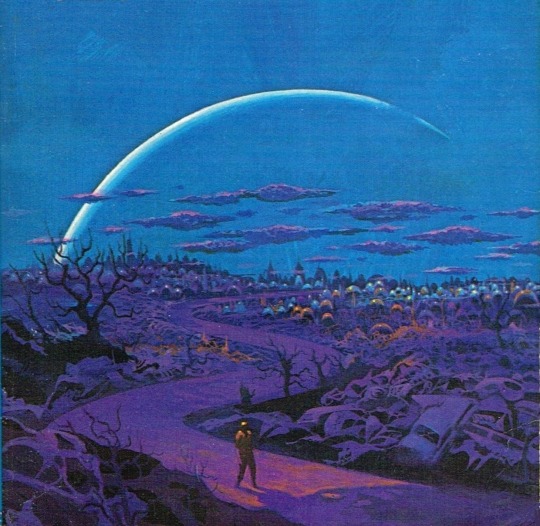
One of my favorites by Paul Lehr, used as a 1971 cover to "Earth Abides," by George R. Stewart. It's also in my upcoming art book!
1K notes
·
View notes
Quote
もともとは10年ほど前にTumblrにすごくハマっていて。いろんな人をフォローしたらかっこいい写真や色が洪水のように出てきて、もう自分で絵を描かなくて良いじゃん、ってなったんです。それで何年も画像を集めていって、そこで集まった色のイメージやモチーフ、レンズの距離感など画面構成を抽象化して、いまの感覚にアウトプットしています。画像の持つ情報量というものが作品の影響になっていますね。
映画『きみの色』山田尚子監督×はくいきしろい対談。嫉妬し合うふたりが語る、色と光の表現|Tokyo Art Beat
144 notes
·
View notes
Photo




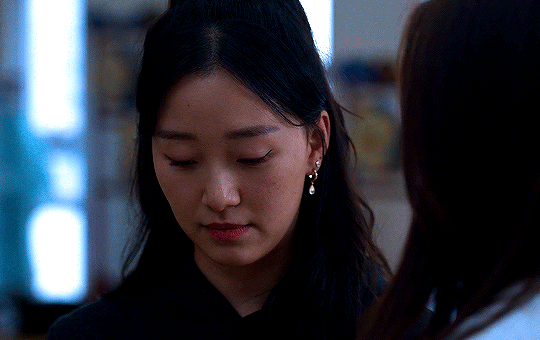
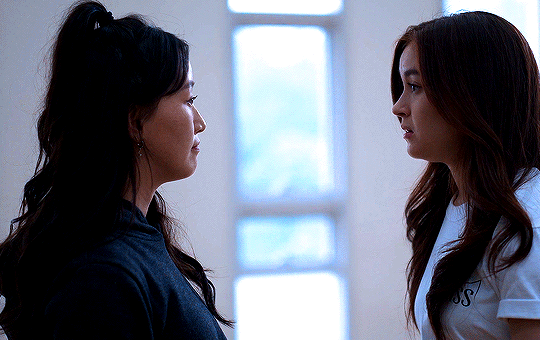

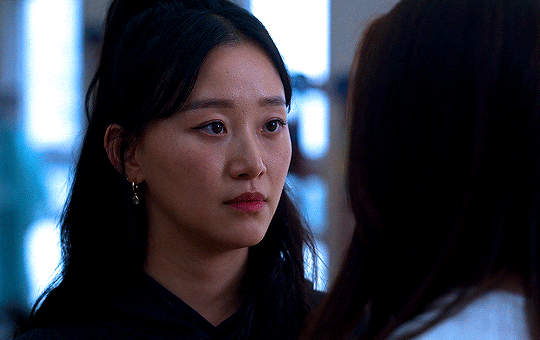

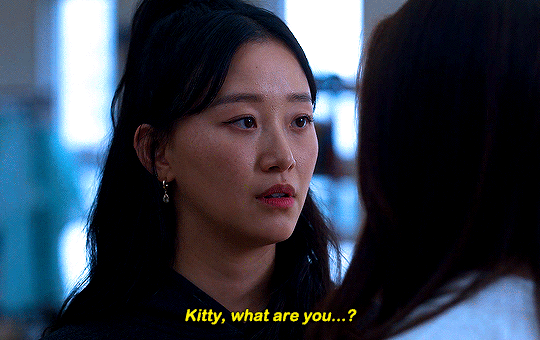
#thistension
XO, KITTY — 1.09 “SNAFU”
#xokittyedit#tatbilbedit#kdramaedit#netflixedit#wlwedit#xokittydaily#asiancentral#cinemapix#cinematv#filmtvcentral#pocfiction#smallscreensource#teendramaedit#wlwgif#kitty song covey#yuri han#xo kitty#anna cathcart#gia kim#~#inspiration: romantic.#dynamic: ff.
1K notes
·
View notes
Photo
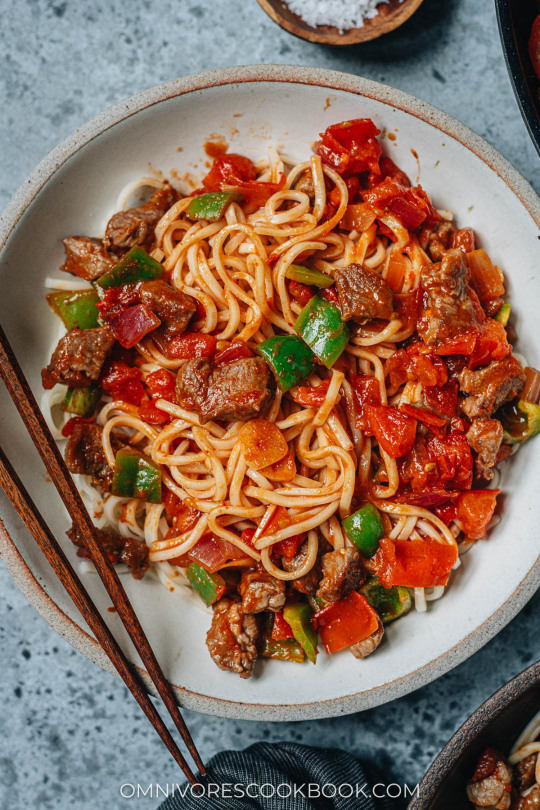
Noodles with Lamb Sauce (Laghman, 新疆拌面) Xinjiang laghman features chewy noodles served with a bold and rich lamb and tomato sauce that is bursting with flavor.
Recipe: https://omnivorescookbook.com/recipes/uyghur-style-noodles-with-lamb-sauce
121 notes
·
View notes
Photo





CJ from Hello World (MSPFA) by phasedsun?
110 notes
·
View notes
Quote
よく「発明は1人でできる。製品化には10人かかる。量産化には100人かかる」とも言われますが、実際に、私はネオジム磁石を1人で発明しました。製品化、量産化については住友特殊金属の仲間たちと一緒に、短期間のうちに成功させました。82年に発明し、83年から生産が始まったのですから、非常に早いです。そしてネオジム磁石は、ハードディスクのVCM(ボイスコイルモーター)の部品などの電子機器を主な用途として大歓迎を受け、生産量も年々倍増して、2000年には世界で1万トンを超えました。
世界最強「ネオジム磁石はこうして見つけた」(佐川眞人 氏 / インターメタリックス株式会社 代表取締役社長) | Science Portal - 科学技術の最新情報サイト「サイエンスポータル」
71 notes
·
View notes
Photo

PORTO ROCHA
522 notes
·
View notes
Photo

HRH The Princess of Wales in Southport today, on her first engagement since completing chemotherapy. It’s so good to see her!❤️ --
#catherine elizabeth#princess catherine#princess of wales#princess catherine of wales#catherine the princess of wales#william arthur philip louis#prince william#prince of wales#prince william of wales#william the prince of wales#prince and princess of wales#william and catherine#kensington palace
110 notes
·
View notes

